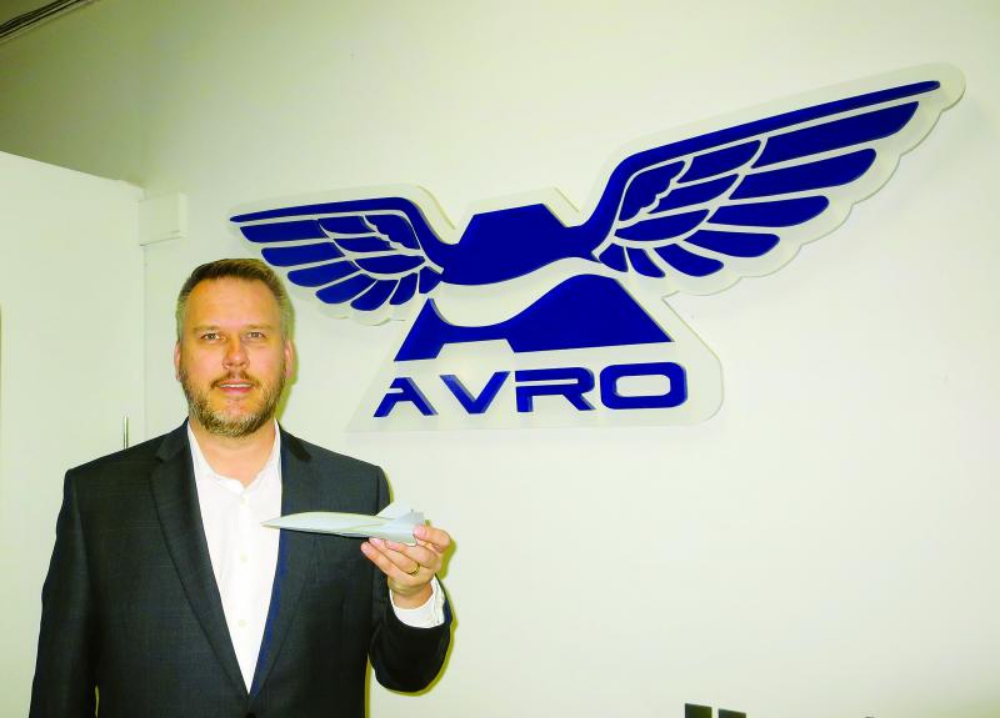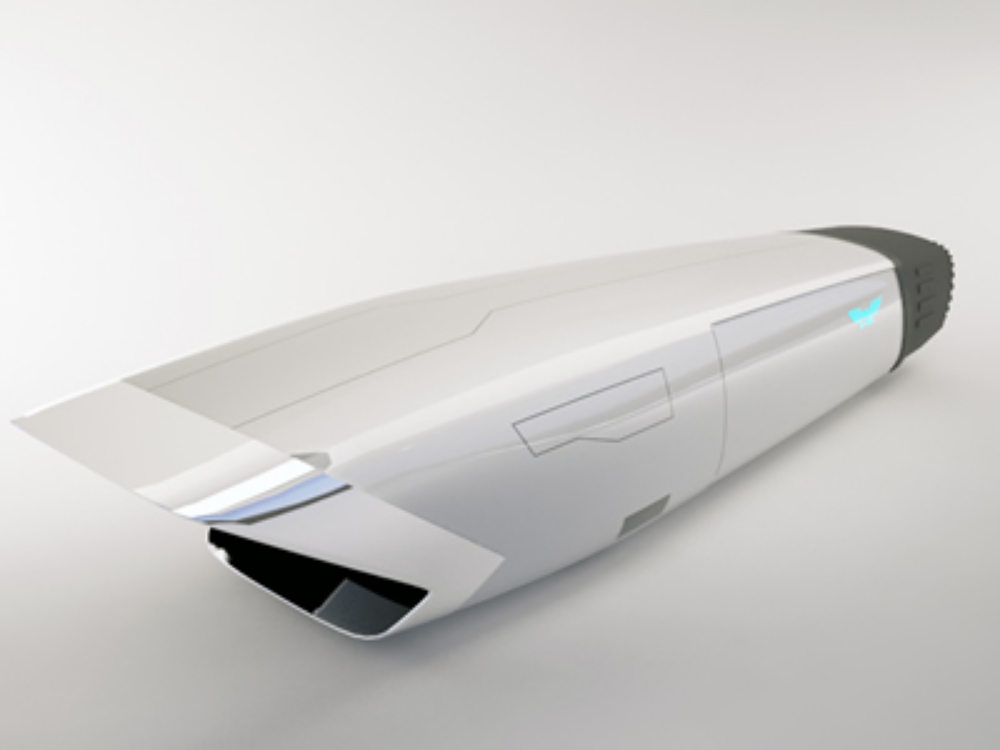Unmanned aerial vehicles flying at supersonic speed will be launched this summer at CFB Suffield, says Atlantis Research Laboratories’ Avro Division in Medicine Hat. The Avro Mark X, with the appearance of a sleek jet, is 22 feet long, weighs a thousand pounds and can carry a load of 500 kilograms.
There are obvious military applications for the vehicle including flying into a dangerous military zone, but also for search and rescue missions, a rapid response to a crisis zone to deliver emergency provisions, and for the coast guard, said Vladimir Mravcak, CEO Atlantis Research Labs, which operates the Avro Aircraft division in Brier Park, Medicine Hat.
“We feel that we are going to make Alberta a leader in space,” said Mravcak. “Medicine Hat is ideally situated and the seeds planted over the last few decades have established southern Alberta as a leader in the high-speed unmanned vehicles industry.”
The Avro Mark X can be completely manned from the ground. With onboard camera systems, GPS, Fly-by-wire – a system that replaces conventional manual flight controls – infrared technology and biological sensors, it could be used to locate wildlife, fly at a low altitude over water and ground to identify resources and could fly patrols on the northern border sending camera footage back to base.
Mravcak says it could be five times as quick reaching its destination than current conventional means of aircraft flown by pilots. It reduces the cost as a result and the potential for loss of life in a mission is no longer a consideration.
Mravcak does anticipate the need for highly skilled pilots to operate the Avro Mark X remotely. There would also be the possibility for a pilot in an aircraft, such as a CF18, being in control of two Avro Mark X – one just beyond each CF 18 wing. The pilot would then determine at which point to have the Avro Mark X enter a potential danger zone first.
While still in the early stages of testing, Mravcak plans to launch three at CFB Suffield later this summer. If that test is successful Mravcak expects to see Avro technology operational in three to five years.
Atlantis’s Avro program has been developing unmanned aerial vehicle systems since 2012.
Last month Atlantis Research Laboratories announced a multi-million dollar, five-year aerospace development program in collaboration with the University of Calgary. Funds are matched by Natural Sciences and Engineering Research Council.
At the Schulich School of Engineering at the University of Calgary, five people with PhDs and 30 students with masters degrees are working on Avro’s research and development under the direction of Craig Johansen and Mravcak.
“We have the talent, we have the framework and provincial and federal clearance to conduct the required experiment flights,” said Mravcak.
Atlantis and the University of Calgary successfully conducted the launch of the new Avro technology at CFB Suffield last August. Avro technology is currently under development at its Medicine Hat facility.
Two additional staff have been hired in the past week and there will be more hired in the days to come, said Mravcak.
“Medicine Hat really has a special segment that 50 years from now will be well known,” said Mravcak.
There is no connection between the Avro Division of Atlantis Research and the former Avro Canada that developed the CF-105 Arrow in the 1950s, before being abruptly stopped in 1959 by then-prime minister John Diefenbaker. However, federal permission was required for part of the name to be used.
For Mravcak, Avro Canada was a huge inspiration. He calls the Avro Mark X a continuation of Avro Canada’s achievements to once again set a standard in aerospace.
In August 2017 Atlantis Research Laboratories merged with Form-Tech machining in Medicine Hat.
Source: Medicine Hat News



I,m so glad you were able to use the AVRO name. The arrow used to fly over my house in Ontario. Brings the Arrow back to life.